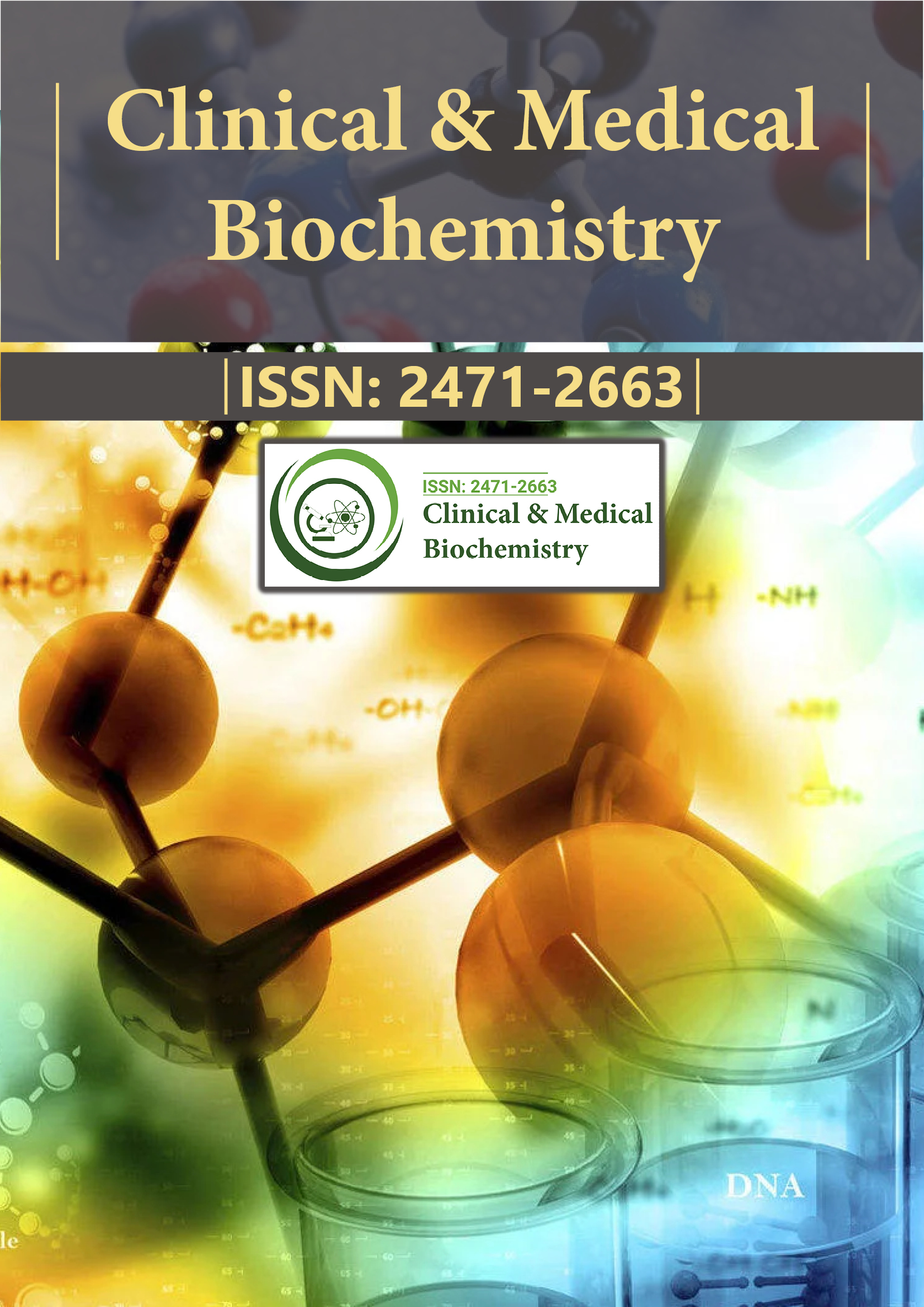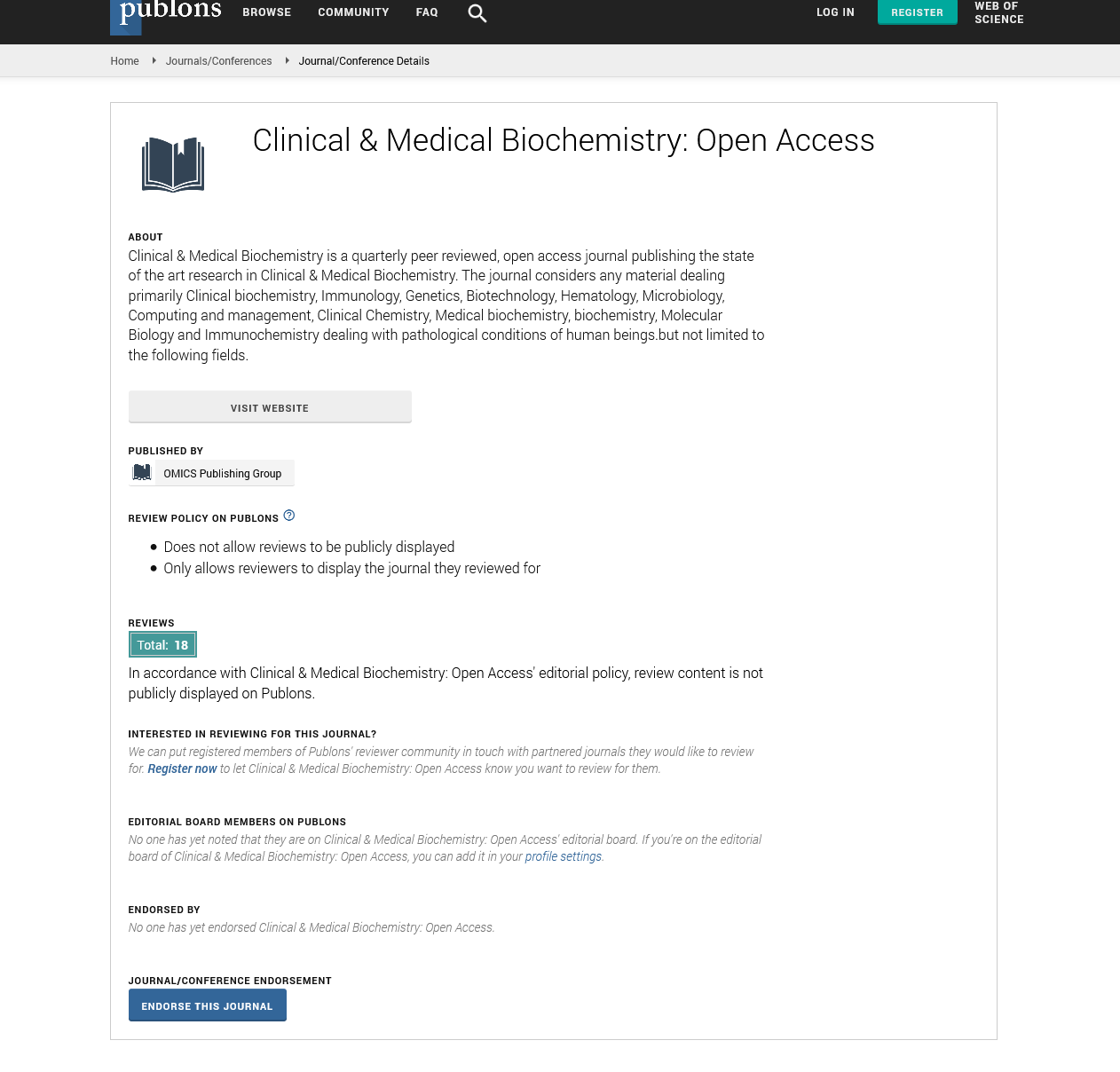Indexed In
- RefSeek
- Directory of Research Journal Indexing (DRJI)
- Hamdard University
- EBSCO A-Z
- OCLC- WorldCat
- Scholarsteer
- Publons
- Euro Pub
- Google Scholar
Useful Links
Share This Page
Journal Flyer

Open Access Journals
- Agri and Aquaculture
- Biochemistry
- Bioinformatics & Systems Biology
- Business & Management
- Chemistry
- Clinical Sciences
- Engineering
- Food & Nutrition
- General Science
- Genetics & Molecular Biology
- Immunology & Microbiology
- Medical Sciences
- Neuroscience & Psychology
- Nursing & Health Care
- Pharmaceutical Sciences
Opinion Article - (2024) Volume 10, Issue 2
Glycolysis: A Significant Stage in the Production of Internal Energy
Lucifer James*Received: 25-Apr-2024, Manuscript No. CMBO-24-25758; Editor assigned: 29-Apr-2024, Pre QC No. CMBO-24-25758 (PQ); Reviewed: 14-May-2024, QC No. CMBO-24-25758; Revised: 22-May-2024, Manuscript No. CMBO-24-25758 (R); Published: 30-May-2024, DOI: 10.35841/2471-2663.24.10.216
Description
Glycolysis is an essential phase in cellular metabolism since it is the primary mechanism that converts glucose into energy and metabolic intermediates. Given that this ancient metabolic pathway is preserved in a wide variety of creatures, including bacteria and humans, shows how fundamentally important it is to maintaining life. Through studying the biochemical events, regulatory mechanisms, and physiological significance of glycolysis, we can acquire important knowledge about the dynamic connections across metabolic pathways that regulate cellular energy production and homeostasis. Essentially, several metabolic reactions known as glycolysis break a single glucose molecule into two pyruvate molecules, producing ATP and Nicotinamide Adenine Dinucleotide (NADH) as byproducts. Enzymes play an important role in coordinating the 10 distinct steps of the route, which are then broken down into smaller, more easily metabolized intermediates. These intermediates provide reducing equivalents and ATP, which fuel cellular processes, once phosphorylation, isomerization, and oxidation reduction events are completed.
Hexokinase or glucokinase phosphorylates glucose to produce glucose-6-phosphate, which is the first step in the beginning of glycolysis. This is an important regulatory process that keeps glucose inside the cell and directs it into metabolic pathways. Phosphofructokinase-1 (PFK-1), a rate-limiting enzyme in glycolysis, catalyzes the highly controlled pathway that converts glucose-6-phosphate into fructose-6-phosphate and subsequently into fructose-1,6-bisphosphate by subsequent enzymatic reactions. Triglyceraldehyde-3-Phosphate (G3P) and Dihydroxyacetone Phosphate (DHAP), the two triose phosphates produced by the removal of fructose-1,6-bisphosphate, interconvert each other through the action of the enzyme triose phosphate isomerase. The oxidation and phosphorylation of triose phosphates are the next steps in glycolysis, which produce ATP and NADH. The oxidation of G3P to 1,3- bisphosphoglycerate and the reduction of NAD+ to NADH are catalyzed by glyceraldehyde-3-phosphate dehydrogenase. Phosphoglycerate kinase transfers the 1,3-bisphosphoglycerate's high-energy phosphate group to Adenosine Diphosphate (ADP), producing 3-phosphoglycerate and ATP in the process. Phosphoenolpyruvate (PEP), a high-energy intermediate, is created through a sequence of rearrangement and dehydration processes that first convert 3-phosphoglycerate into 2- phosphoglycerate.
Pyruvate kinase transfers the phosphate group from PEP to ADP in the last stage of glycolysis, producing pyruvate, the last product of glycolysis, and ATP. Another important regulatory point in glycolysis is this irreversible reaction, which is closely regulated by allosteric regulation and hormone signals that represent the cell's energy status and metabolic needs. An essential metabolic hub, pyruvate, can be further metabolized in either anaerobic or aerobic environment based on the cell's metabolic state and the amount of oxygen available. In an aerobic environment, pyruvate enters the mitochondrial matrix and is converted to acetyl-CoA by the enzyme Pyruvate Dehydrogenase Complex (PDC), which connects glycolysis to oxidative phosphorylation and the Tricarboxylic Acid (TCA) cycle. The TCA cycle uses acetyl-CoA as a substrate to produce reducing equivalents, such as NADH and FADH2, which power the Electron Transport Chain (ETC) and ATP production. By converting pyruvate into 36 ATP molecules for every glucose molecule, this aerobic metabolism optimizes the energy yield from glucose oxidation.
In contrast, under anaerobic conditions or during periods of oxygen deprivation, pyruvate is converted into lactate via lactate dehydrogenase, regenerating NAD+ from NADH and allowing glycolysis to continue in the absence of oxygen. This anaerobic metabolism, known as fermentation, enables the rapid production of ATP under conditions of limited oxygen availability, albeit with lower energy efficiency compared to aerobic respiration. Lactic acid fermentation is commonly observed in exercising muscles, where oxygen demand exceeds supply, leading to the accumulation of lactate and the sensation of muscle fatigue.
Apart from its function in generating energy, glycolysis interacts with other metabolic routes and cellular functions, impacting cell division, growth, and communication. The components required for cell development and division are produced by glycolytic intermediates, which act as precursors for biosynthetic pathways that include the synthesis of lipids, nucleotides, and amino acids. Furthermore, glycolytic enzymes and metabolites influence gene expression and cell fate decisions in both health and disease by taking part in oxidative stress response mechanisms, redox signaling pathways, and epigenetic control. Numerous metabolic illnesses, including diabetes, cancer, and neurological diseases, are linked to dysregulation of glycolysis. Altered expression or activity of glycolytic enzymes, metabolic reprogramming, and oncogene-driven signaling pathways contribute to the Warburg effect, a metabolic characteristic of cancer defined by accelerated aerobic glycolysis and lactate generation in tumor cells. Targeting glycolytic pathways and metabolic deficiencies has emerged as an attractive option for cancer therapy, with inhibitors of glycolytic enzymes and glucose transporters showing potential as anticancer drugs.
Conclusion
Glycolysis is a fundamental process in cellular metabolism that produces energy and metabolic intermediates needed for cellular survival. Through the analysis of glycolysis's biochemical events, regulatory mechanisms, and physiological importance, researchers can acquire important knowledge about the dynamic interactions across metabolic pathways that control homeostasis and cellular energy generation. Novel treatments and precision medicine techniques that target metabolic sensitivities in health and disease are made possible by knowledge of the complexity of glycolysis and the opportunity it presents for therapeutic intervention in metabolic disorders, cancer, and other diseases.
Citation: James L (2024) Glycolysis: A Significant Stage in the Production of Internal Energy. Clin Med Bio Chem. 10:216.
Copyright: © 2024 James L. This is an open-access article distributed under the terms of the Creative Commons Attribution License, which permits unrestricted use, distribution, and reproduction in any medium, provided the original author and source are credited.

